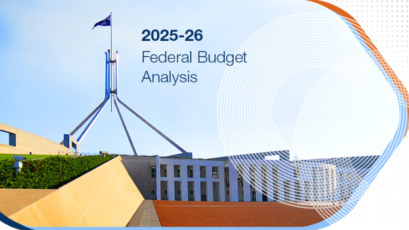The S&P/ASX 200 Accumulation Index rose 3.8% in April, helped along by rising commodity prices, allowing the index to recover from the falls during February and March. All sectors were positive, with Energy (+10.7%) and Materials (+7.4%) the top performers. Financial stocks were flat overall, but AMP (down 19%) took a hammering during the Hayne Royal Commission revelations.
| INDEX RETURNS AS AT 31 March 2018 (%) | ||||
| 1 month | 3 months | 6 months | One year | |
| Australian Shares | 3.91 | 0.34 | 3.37 | 5.46 |
| International Shares | 2.78 | 1.74 | 5.03 | 12.17 |
| Domestic Listed Property | 4.47 | 1.10 | 3.18 | 1.03 |
| Global Listed Property | 2.87 | -1.28 | 0.79 | 3.05 |
| Australian Fixed Interest | -0.35 | 0.79 | 0.86 | 2.16 |
| International Fixed Interest | -0.38 | 0.22 | -0.04 | 1.74 |
| Cash | 0.16 | 0.44 | 0.87 | 1.75 |
| Market Indices | ||||
| S&P/ASX 200 Accumulation Index | ||||
| MSCI World ex Aust TR Index $A | ||||
| S&P/ASX 300 Property Trusts Accum Index | ||||
| FTSE EPRA/NAREIT DEVELOP NR INDEX (A$ HEDGED) | ||||
| Bloomberg Composite 0 + Years | ||||
| BarCap Global Aggregate Index Hedged AUD | ||||
| Bloomberg Aus Bank Bill Index | ||||
Unsurprisingly the Reserve Bank kept rates on hold during the month, the 21st month in a row of no change. The last time the Bank sat on its hands this long was back in 1990. The CPI number for March at +0.40% for the quarter, and +1.9% year on year, is not giving the bank any excuses for an inflation busting increase. In spite of that, longer term interest rates have drifted higher, and that in turn is the cause of the poor returns in the fixed interest returns as shown in the last three lines of our performance table above. As rates rise, the current value of a fixed series of future cashflows will naturally fall. As the table shows, the last year in a benchmark fixed income portfolio returned a best result of 2.16%. One would have done better in term deposits. Our preferred managed funds in the fixed income sector did better on average than the benchmark, through being shorter in duration.
An update on last month’s Financial Market Update
In our last month’s update we spoke about debt levels and how that weighs on the average consumers ability to increase discretionary spending. In our humble view, debt increases beyond the nominal (basically GDP growth + the inflation rate) growth in the economy, are simply bringing forward future consumption into current days. That means consumption later has to be lower, as more of wage earners dollars go into paying off debt. Higher debt simply means stronger headwinds in the future.
The Hayne Royal Commission made headlines throughout the month of April with shocking revelations of mis-conduct not only at the transactional coalface, but right to the highest positions of responsibility within financial institutions.
The irony is, that in spite of all the public cheering of the ‘inquisitioners’ (Rowena Orr received the nickname Rowena ‘shock and’ Orr), the public in two ways are likely to be worse off in the short term, and painfully better off in the long term.
Allow me to explain. First, although the bank lending practices and vertical integration are going to come under more scrutiny following this Royal Commission, it will be bank shareholders who are likely to suffer more than might be gained by improvements to bank practices. Most people don’t think of themselves as bank shareholders, but I would say that 90% of Australians that have a superannuation fund are indirectly bank shareholders. The ‘Financial’ sector makes up 31% of the Australian sharemarket. As such a big sector, it is likely that every large balanced industry or retail superfund is going to have a 30% exposure to Australian shares, and a 31% benchmark exposure puts the net exposure at around 9% according to the back of this napkin. One reason not to indulge in too much schadenfreude.
The second, and potentially much greater impact is from further credit regulation and scrutiny of borrowers. Again, I hear you say, about time! And yes, I agree, for too long the banks have loaned too much to aspirational borrowers who will struggle to repay, and who now have little left over for discretionary spending.
The fall
In January 2018, CoreLogic was forecasting a fall of up to 10% in Sydney house prices. That was before the Royal Commission got going. Rapid housing prices have generally been accompanied by accelerating rates of credit growth in the past. Now that banks are actually going to be checking the real expenses of borrowers to determine their ability to comfortably service a loan, we will most definitely witness a squeeze on credit. Those who once may have been able to borrow $800,000 for a home, might now only stretch to $600,000. Though the impact is not like falling off a cliff, ie; a crash, it does create a negative feedback loop on the way down, just as rising prices create the same upward spiral. Add to that a lot more international scrutiny, and banks themselves will start to experience increased funding costs, which will either squeeze their margins, or push up mortgage rates, or most likely a bit of both.
The agony when your $800,000 investment apartment falls in value to $600,000 will be felt for a lot longer than the joy of seeing bank executives squirming in their collective seats.
The capital and the opportunity to invest in more productive assets
However, every cloud has a silver lining. The Royal Commission may well be a watershed moment in history. Maybe now, instead of leveraging up in residential property, investors might be more attracted to productive investment that requires much less leverage to make a difference. We have world class companies, infrastructure projects and agricultural assets here in Australia that are too often sold off to foreign interests. We have the capital, let’s hope Australian bankers, and Australian investors can get it right and find ways to get money into more productive assets and businesses that take us beyond digging up rocks and building enormous houses.













